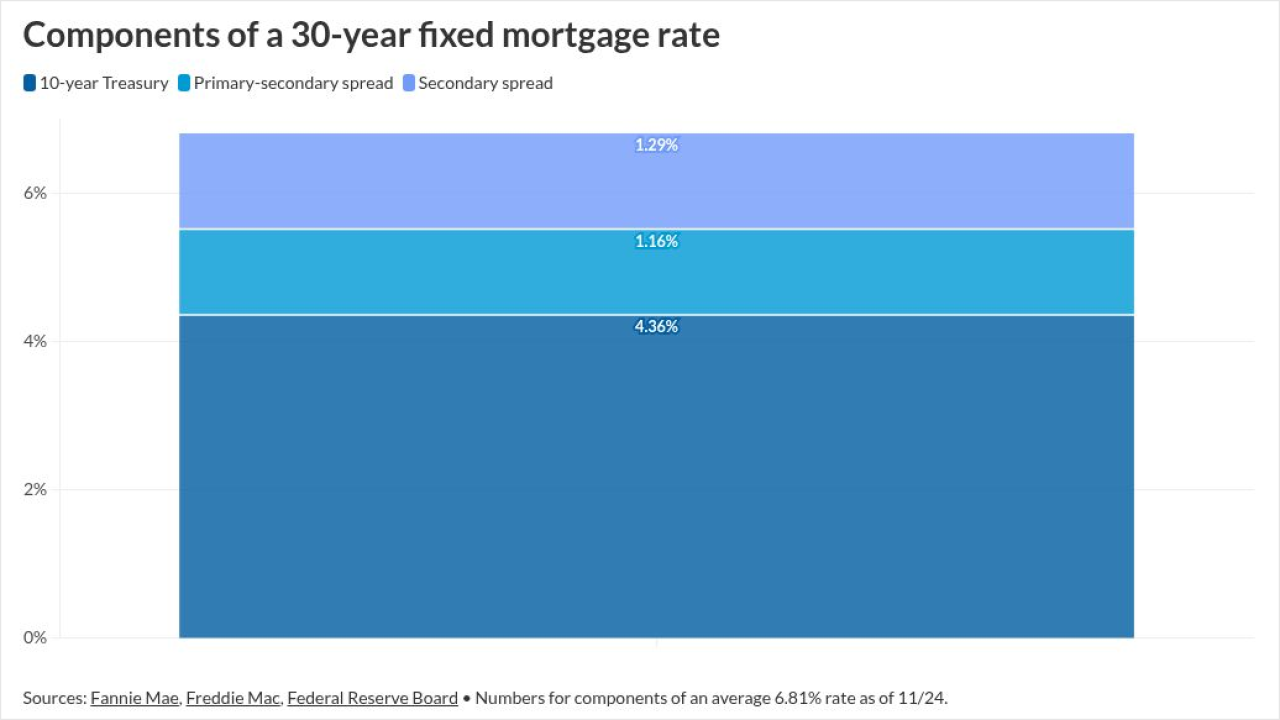Bank of America reduced its employee headcount by around 1,000 in the first part of April — and is planning more downsizing later this year — after its noninterest expenses soared last quarter.
The job reductions are part of an effort to rein in expenses as the nation's second-largest bank anticipates a small recession on the horizon.
BofA's payroll number peaked at 218,000 in January before falling to 216,000 last Friday, Chief Financial Officer Alastair Borthwick told analysts Tuesday during a quarterly earnings call.

By the end of the second quarter, the bank expects its full-time equivalent headcount to be roughly 213,000, excluding summer interns, Borthwick said.
The Charlotte, North Carolina-based bank projected that the headcount reductions in the second quarter will lower its costs by up to $500 million. And more jobs are expected to be trimmed in the second half of the year.
"We expect continued sequential expense declines in the third quarter and then again in the fourth quarter as we benefit from continued headcount discipline and attrition through time," Borthwick said.
The $3.2 trillion-asset bank also recommitted Tuesday to its full-year expense guidance of around $62.5 billion.
During the pandemic, a tight labor market forced employers to increase salaries and compete for workers. But recent inflation and rising interest rates have put pressure on BofA and other large banks to offset rising costs by reducing staff.
"We built up more people largely because of the fear last year of the turnover rate that has now gone in half," BofA CEO Brian Moynihan told analysts on Tuesday. "We built up people, and we're bringing that back down in line."
Moynihan predicted that the economy is moving toward a "shallow" recession that he expects to begin later this year.
"We see a slight recession, and we'll see what happens," he said.
Various banks have been bracing for a downturn. In December, the investment bank Morgan Stanley cut around 1,200 employees, or roughly 2% of its workforce. Since then, Goldman Sachs, New York Community Bancorp and PacWest Bancorp have all made
BofA has sought to avoid following suit.
"We don't have any plans for mass layoffs," Borthwick told reporters in January. "There'll be none," Moynihan said later in the month during an
Then in February, Bloomberg News

During the first quarter, BofA's noninterest expenses rose 6% from the same period last year to $16.2 billion. Since the end of 2022, they were up 4.5%.
The rising expenses cut across different business lines. In wealth management, BofA reported adding more than 650 advisors over the last year.
In addition to staffing, Moynihan cited BofA's $22 hourly
The higher costs were one blemish in an otherwise strong earnings report. Revenue rose 13% from the same period last year to $26.3 billion, and net income rose 15% to $8.2 billion.
Still, analysts cautioned Tuesday that investors might not respond favorably to the rising costs. Bank of America's stock price rose 0.6% on Tuesday to $30.56.
"The market may not reward the shares as much as implied by the reported outperformance on concerns about its sustainability," analysts at Piper Sandler wrote in a research note.
BofA has recently faced "more upward pressure on expenses than anticipated," Piper Sandler analyst Scott Siefers said in an interview.
"Conceptually, they're doing the right thing," Siefers said. "It's good that they're squeezing dollars out of cost savings in an emerging and tougher revenue environment."
But expense reductions will become "tougher the further out you go," Siefers said. "It's incrementally that much more difficult to squeeze out additional costs."




